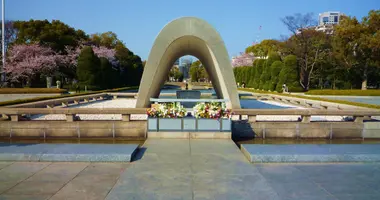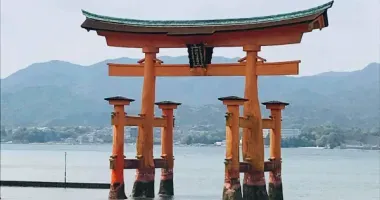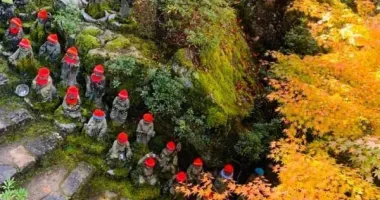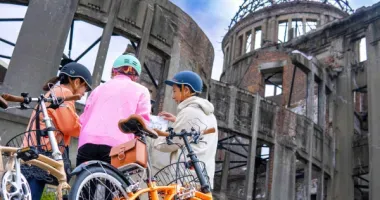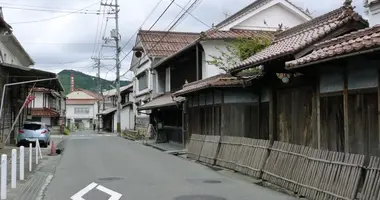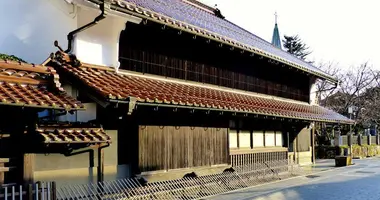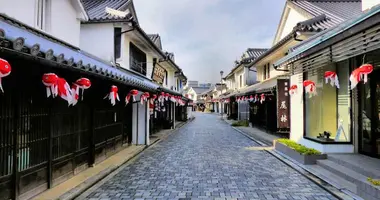Kure Travel Guide
Knowing Tranquility Part XIV: Kure 呉市
Edward J. Taylor
Kure is a port and ship-building city on the coast of Hiroshima Prefecture. The city is the second oldest naval dockyard in Japan and a base for the Japan Maritime Self-Defence Force (JMSDF).
I have no other impression of Kure other than that it was an industrial military town. I'd seen it only once before, from the deck of a boat, and the massive submarine sitting on shore confirmed my impression. I don't usually go for military things (tending to prefer silk over iron), and that included the city's famous craft beer, packaged in a way that seems to glorify Kure's wartime legacies.
But looking up from the bus as I disembark my eyes fall immediately on the brewery just over the river from the train station. It takes little more to break the treaty with myself, and within minutes I am tipping back the first of a few beers I enjoyed that evening, to wash down the brewery's 'renowned' curry, which tastes...just like a curry. The beer vindicates the place, especially their Kure Ginjo Beer, which is one of the best I've had in a while.

Kure beers
Yamato Museum
Befitting the military tradition here, it seems appropriate to get bombed. I don't allow myself to drink too much, but the proprietor of the Shiomachi Kan coffee shop in Mitarai had told me of a bar where you could eat dango rice cakes as you sipped some of Kure's famous sake.
I enjoy a pleasant walk through an old shopping arcade, but upon finding the bar (done up with a manga motif and patronized by attendant otaku-types) I am told they only did shochu, which isn't my thing at all. Walking back to my hotel, I curse myself for my rookie mistake, forgetting somehow that Shiokan's use of the word 'sake' is the generic word for 'alcohol' in Japanese.
My head forgives me in the morning. The day proves equally bright and clear, but I leave it all too soon for the Yamato Museum near the waterfront. Again, I have no interest in a museum dedicated to war, but as a person interested in history I feel it is time to go. Plus I am curious at how the information would be presented.
The woman selling me my ticket tells me that there was little in English, no surprise at all, for after all, to control language is to control the narrative. The Hiroshima Peace Museum is (in)famous for the difference in tone between the Japanese and English displays, but there wasn't enough of the latter here to compare.
What English there is is in the displays about life and history of Kure itself, somewhat skirting the war issue entirely. Nothing about the naval base here, or the fact that the battleship Yamato's final mission was a suicide run. This latter fact makes all the more moving the final letters of the men aboard. The photos of these sailors show the faces of boys really, still carrying the sweetness of youth. The officers in contrast look hard, resigned to a fate ordered by men just like themselves.

Kure, Hiroshima Prefecture
Thoughts on Kure
A few months after the Yamato was sunk, Kure itself was attacked by the Americans, an attack that sunk the majority of the remaining Japanese fleet, revenge for Pearl Harbor perhaps, but one bittersweet as it ultimately allowed the Soviets to operated freely in the Sea of Japan afterward.
There is no mention anywhere of how many civilians were killed. Despite, or because of, the history with the war, the ones I've encountered are friendly and helpful. Donald Richie in his book The Inland Sea mentions the current Naval Port during his own visit here, and how the people were sick of war.
Or at least they were in the late 1960's. But bizarrely, the opening of the museum in 2005, and all the hype around it, brought new life to the city itself, and references to it are simply everywhere. But it seems fitting somehow that the kanji for Kure (呉) always looks to me like someone apologizing with clasped hands, which bizarrely enough also contains part of the character for apology itself.

Scale replica of the Yamato at the Yamato Museum, Kure
Access - Getting To Kure
Kure can be reached by train on the JR Kure Line, about 30-45 minutes east of Hiroshima Station in Hiroshima depending on the type of train.
Accommodation
There is a good variety of places to stay in Kure. These include the three star Kure Hankyu Hotel, a short walk from the Yamato Museum, the two star Hotel Tomato and the budget Guest House Kutomare.
If you wish for us to reserve accommodation for you anywhere in Japan (for a small fee) please contact us.
About the Author
Based in Kyoto, Edward's work has appeared in a variety of print and online publications. Co-editor of the Deep Kyoto Walk anthology, he is currently at work on a series of books about walking Japan's ancient highways. Edward is the author of the blog notesfromthenog.blogspot.jp
Books on Japan Travel
Kure (呉) is a port and ship-building city on the coast of Hiroshima Prefecture. Kure is the second oldest naval dockyard in Japan and a base for the Japan Maritime Self-Defence Force (JMSDF)

